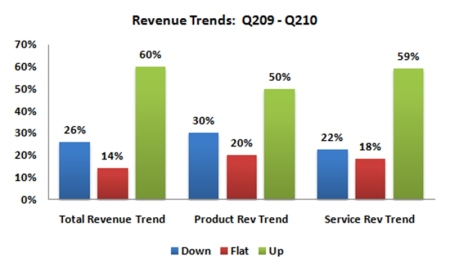In my last post related to Managed Services (Framing Managed Services), I made the following observation:
Managed Services is the fastest growing service line for hardware and software companies that have established support and professional service businesses.
At TSIA, we see this trend continuing in 2013. To support this critical service line, we have hired a veteran from the Managed Services industry to lead a new TSIA service discipline dedicated to Managed Services. George Humphrey joins us from Avaya where he helped build and optimize their Managed Services offerings.
This week, George was debriefing me on conversations he has had during his first thirty days with the advisory board members of this new discipline. Companies currently represented on the board include: Avaya, Cisco, EMC, JDA Software, Microsoft, IBM, Symantec, and Ricoh.
As George summarized the discussions, I was transported back in time. I felt like it was twelve years ago, when I first started working with multiple product companies regarding their Professional Services business. At that time, all of the PS leaders suffered from the same handicap—they could not benchmark the financial performance of their business against similar embedded organizations. Because no meaningful benchmark existed, management teams (and executive teams and boards) were forced to guess what reasonable or unreasonable performance was. This vacuum of facts created many absurd expectations. Today, Managed Service organizations are suffering from this same exact vacuum of facts. Just as Professional Services embedded within a product company IS NOT the same business as independent consulting, Managed Services within product companies IS NOT the same business as independent Managed Services.
George said to me “I see it again and again—companies under estimating the time and investment required maturing an MS platform.” With no baselines grounded in fact, I have found management teams will gravitate to optimistic fiction.
As we talked more, George began outlining the common mistakes he has seen product companies make as they work to establish an MS business. Besides underinvesting in general, product companies also miscalculate the shift required in the sales model. Managed Services is different from every other service line product companies establish such as Professional Services, Education Services, and Support Services. Why? Because Managed Services DOES NOT naturally relate to a product transaction. Think about the consequences of that reality for a moment. They are massive when it comes to creating demand for this service line.
By the end of the conversation, George had outlined several more challenges commonly faced by embedded MS organizations. I have asked George to publish a paper for the MS membership titled: “The Top Five Mistakes Made When Building a Managed Services Business.” Even before the data from his new MS benchmark starts flowing in, he knows what these common friction points are.
For more information on George’s work and TSIA’s Managed Services Discipline, contract George directly at george.humphrey@tsia.com





